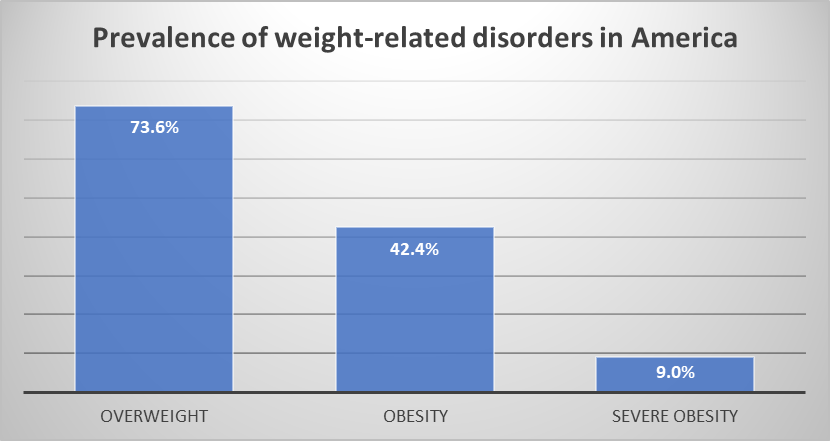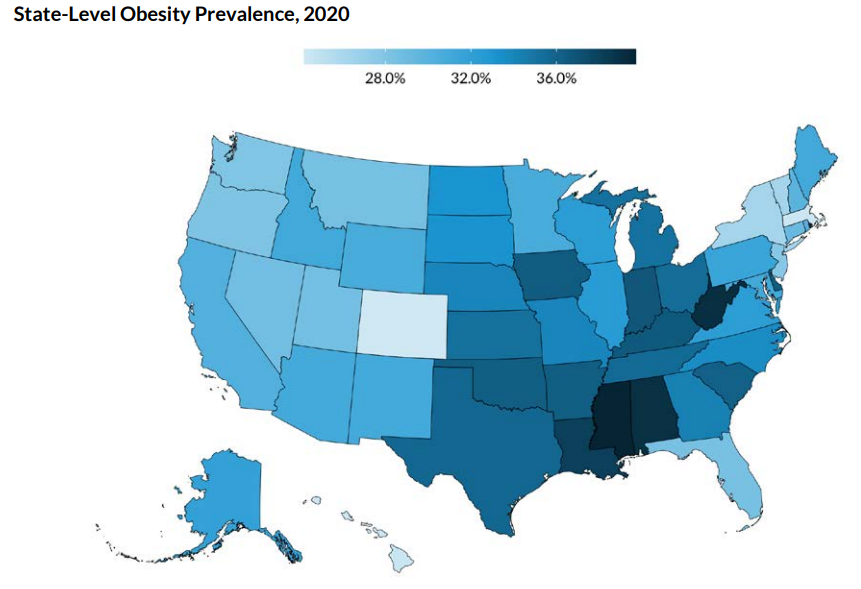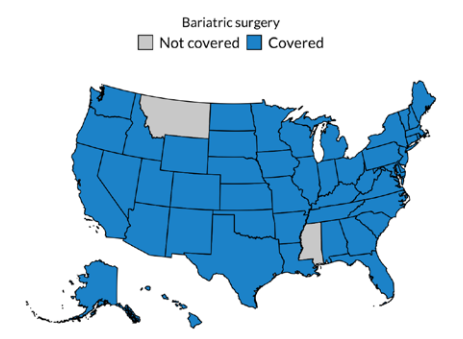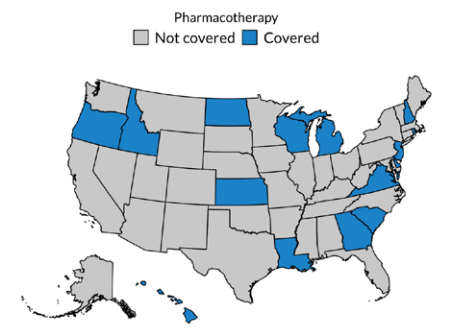The Urban Institute has an interesting report titled Obesity Across America. Being overweight (BMS>25), obese (BMI>30) or severely obese (BMI>40) is very common in the U.S. with three quarters of individuals being overweight and nearly half obese.

Obesity varies by race and ethnicity as well.
Black adults are more likely to live with obesity than adults of other racial and ethnic groups, and Black women experience the highest rate (56.9 percent)…Asian adults are significantly less likely to have obesity than Black, Hispanic/Latinx, or white adults (17.4 percent versus 49.6 percent, 44.8 percent, and 42.2 percent)…almost half (49.2 percent) of American Indian and Alaska Native adults reported having been told by a clinician that they have obesity.
Obesity is more common in the South and Midwest and less common in the Pacific Northwest.

How do State Medicaid Agencies try to reduce obesity? Screening and counseling are covered by most states as is bariatric surgery, but few states cover anti-obesity medication pharmacotherapy. Specifically:
…pharmacotherapy is the least covered treatment option. Only 15 Medicaid programs cover AOM in fee-for-service Medicaid, and only 4 additional programs cover [anti-obesity medications] AOM under at least one Medicaid managed-care plan. In only two states does the benchmark Marketplace plan cover AOM. Finally, 16 state employee plans offer such coverage. In contrast, all but two states cover some form of bariatric surgery under Medicaid, as do 23 state benchmark plans and 42 state employee plans


State Medicaid Agency fee-for-service coverage of anti-obesity pharmacotherapy
The Urban Institute report concludes as follows:
Expanding health insurance access through Medicaid and covering obesity treatments through Medicaid and Medicare would help states combat obesity. This is especially true for high-prevalence states, where both uninsurance and Medicaid coverage rates are higher than such rates in low-prevalence states.
The report provides a nice overview of where we are with obesity in the U.S.